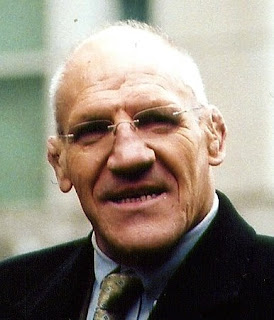Star of 1982 became coach of Italy's women
 |
| Antonio Cabrini starred in the bianconeri strip of Juventus |
Cabrini, who went on to becone head coach of the Italian women's national team, was born on October 8, 1957 in Cremona.
He took his first steps in professional football with his local team, Cremonese, and moved from there to Atalanta of Bergamo, but it was with the Turin club Juventus that he made his mark, forming part of a formidable defence that included goalkeeper Dino Zoff plus the centre-back Claudio Gentile and the sweeper Gaetano Scirea.
During Cabrini's 13 seasons in Turin, the Bianconeri won the Serie A title six times, as well as the 1985 European Cup, plus the Coppa Italia twice, the UEFA Cup and the European Super Cup, and the Intercontinental Cup.
Milan's Paolo Maldini tends to be recognised as the greatest defensive player produced by Italy but Cabrini's abilities put him only just behind.
Known by his fans as Bell'Antonio for his good looks and the elegance of his football, Cabrini's game possessed all the qualities required of a left-back. His positional sense and speed of thought served him well in defensive duties and he was also exceptional going forward.
He was a key figure in the defeat of Liverpool in the 1985 European Cup final, although the memories of the Juventus victory in the Heysel Stadium in Brussels will forever be tarnished because of the deaths of 39 supporters - mainly Italians - when a wall collapsed during disturbances before the match began.
 |
| Italy's team to play Argentina at the 1982 World Cup. Back row (l-r): Zoff, Antognoni, Scirea, Graziani, Collovati, Gentile; Front: Rossi, Conti, Cabrini, Oriali, Tardelli. |
One of these came in the 1982 World Cup finals in Spain, when he scored the winner in a 2-1 victory over holders Argentina in the second group round, in which the Azzurri also beat Brazil to emerge as a force to be reckoned with.
Cabrini missed a first-half penalty in the final, but it was forgotten when second-half goals by Paolo Rossi, Marco Tardelli and Alessandro Altobelli enabled Italy to defeat West Germany and win the trophy for the third time.
In all Cabrini won 73 caps for the national side. He made his debut aged only 20 in the opening match of the 1978 World Cup finals in Argentina, at the end of which he was named Best Young Player of the Tournament after Italy reached the semi-finals.
He also played in the 1986 finals in Mexico, finishing his career with the distinction of having been picked in the starting line-up for every match played by the Azzurri in three consecutive World Cup tournaments.
Cabrini, who captained Italy on 10 occasions, played his last international match in 1987 but continued in club football for another four years, eventually leaving Juventus for Bologna, where he spent his final two seasons.
He did not begin his coaching career for almost 10 years. Starting out in Serie C1 with the Tuscan club Arezzo, he almost won a promotion in his first season, his team losing in the play-offs. Yet subsequent spells in charge at Crotone, Pisa and Navaro brought no success.
 |
| Antonio Cabrini today |
Therefore his appointment in 2012 to coach the women's Italian national team came as a surprise to many but Cabrini's record so far has been good.
Italy's women have never won an international tournament but Cabrini will have another chance to put that right at Euro 2017, which is being hosted by the Netherlands next summer.
Italy qualified by finishing runners-up to Switzerland in their qualifying group, in which they lost at home and away to the group winners but won at home and away against the Czech Republic, Northern Ireland and Georgia, scoring 26 goals and conceding only eight.
Away from football, Cabrini has been politically active as a member of the centre-left Italia dei Valori (Italy of Values) party founded by the former anti-corruption magistrate, Antonio di Pietro.
He was married in 1983 and has two children, 32-year-old Martina and Edoardo, 28, but has now separated from his wife, Consuelo. He has been with his current partner, fashion manager Marta Sannito, for seven years.
UPDATE: Cabrini spent five years as coach of Italy's national women's team before being replaced by Milena Bertolini in 2017.
Travel tip:
Although Antonio Cabrini is not the only notable footballer to be born in Cremona - the former Italy, Juventus and Chelsea striker Gianluca Vialli is another - the northern Italian city is more famous for its long association with music. It hosts a number of important music festivals and has been a centre for the manufacture of musical instruments since the 16th century. The great violin makers of the Amati family, as well as Andrea Guarneri and Antonio Stradivari, both of whom learned the craft from Nicolò Amati, established Cremona's reputation for producing the best violins in the world. Violins are still made in the city to this day.
Travel tip:
Juventus is one of the two major football clubs in Turin, the other being Torino. Although Juventus now play at a stadium on the northern perimeter of the city in the Vallette district, the club's roots are in the city centre. Their original ground was in what is now known as the Parco Cavalieri di Vittorio Veneto, a large green space between Corso IV Novembre and Corso Galileo Ferraris just south of the city centre, which in the late 19th century was Piazza d'Armi, an army parade ground. Nearby is the Stadio Olimpico, now the home of Torino, which was formerly called Stadio Comunale, where the two clubs co-habited until 1990.
Home
 |
| A statue of the violin-maker Stradivari in Cremona |
Although Antonio Cabrini is not the only notable footballer to be born in Cremona - the former Italy, Juventus and Chelsea striker Gianluca Vialli is another - the northern Italian city is more famous for its long association with music. It hosts a number of important music festivals and has been a centre for the manufacture of musical instruments since the 16th century. The great violin makers of the Amati family, as well as Andrea Guarneri and Antonio Stradivari, both of whom learned the craft from Nicolò Amati, established Cremona's reputation for producing the best violins in the world. Violins are still made in the city to this day.
Travel tip:
Juventus is one of the two major football clubs in Turin, the other being Torino. Although Juventus now play at a stadium on the northern perimeter of the city in the Vallette district, the club's roots are in the city centre. Their original ground was in what is now known as the Parco Cavalieri di Vittorio Veneto, a large green space between Corso IV Novembre and Corso Galileo Ferraris just south of the city centre, which in the late 19th century was Piazza d'Armi, an army parade ground. Nearby is the Stadio Olimpico, now the home of Torino, which was formerly called Stadio Comunale, where the two clubs co-habited until 1990.
More reading:
Home











